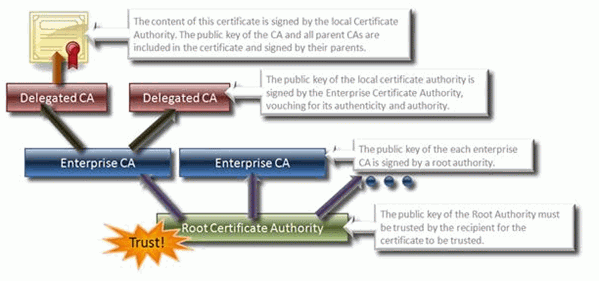Recently, Google discovered that a certificate authority (CA) issued forged certificates for Google domains. This compromises the trust provided by Transport Layer Security (TLS) and Secure HTTP (HTTPS), allowing the holder of the forged certificates to perform a man-in-the-middle attack.
To validate that the website you’re visiting is actually who they claim to be, your browser ensures that the certificate presented by the server you’re accessing was signed by a trusted CA. When someone requests a certificate from a CA, they should verify the identity of the person making the request. Your browser, and operating system, have a set of ultimately trusted CAs (called root CAs). If the certificate was issued by one of them, or a intermediate CA that they trust, you will trust the connection. This whole structure of trust is called a Chain of Trust.
With a forged certificate, you can convince a client that your server is actually http://www.google.com. You can use this to sit between a client’s connection and the actual Google server, eavesdropping their session.
In this case, an intermediate CA did just that. This is scary, because it undermines the security that we all rely on daily for all secure transactions on the internet. Certificate pinning is one tool that can be used to resist this type of attack. It works by associating a host with a specific certificate. If it changes, the connection will not be trusted.
The centralized nature of TLS doesn’t work if you can’t trust the authorities. Unfortunately, we can’t.













